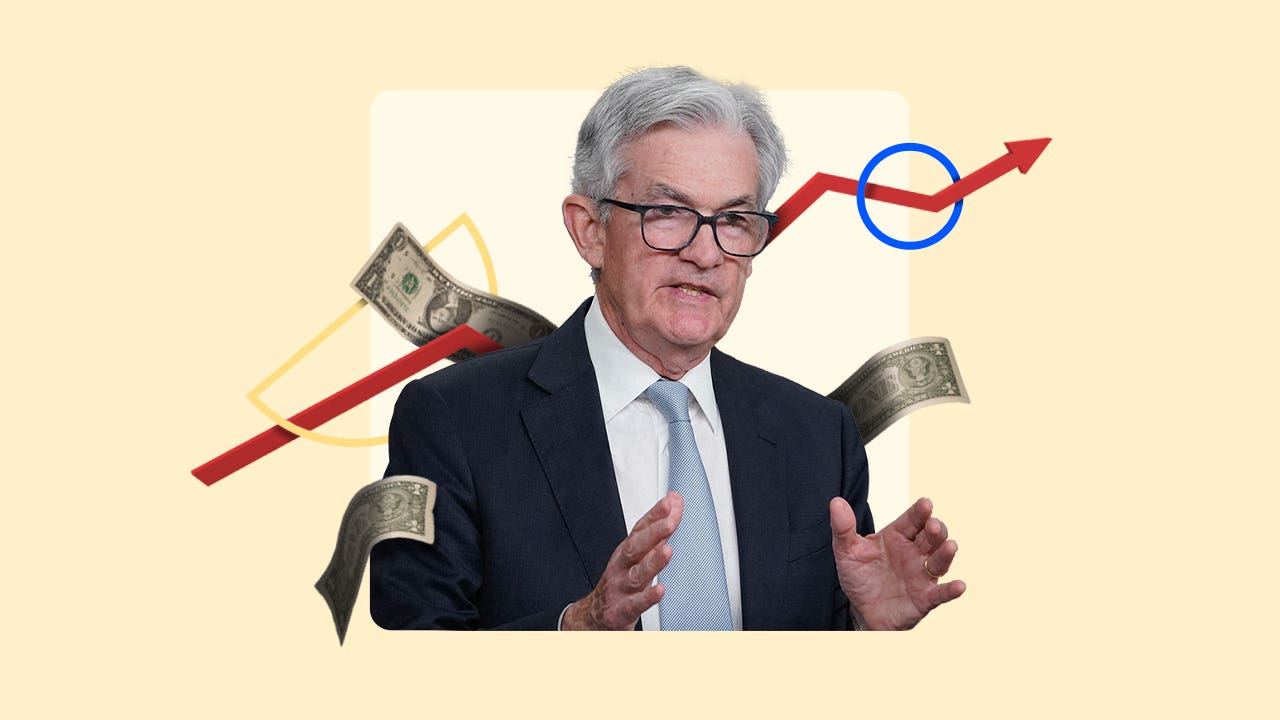Survey: Fed will keep interest rates historically high until end of 2026

Ever since it looked like the Fed’s massive rate hikes to cool inflation peaked, consumers and investors have been fixated on the timing and magnitude of the Federal Reserve’s first rate cut.
It might not mark the turning point they’ve been waiting for.
The nation’s top economists say the Fed is most likely to keep interest rates higher than 2.5 percent — often considered the “goldilocks,” not-too-tight, not-too-loose level for its benchmark federal funds rate — until the end of 2026, Bankrate’s quarterly economists’ poll found. The forecast suggests U.S. central bankers won’t be ready to fully let up the brakes and give the U.S. economy more gas for more than two years, fearing that it could reheat inflation.
That environment will underpin the historically high financing costs consumers have been paying to finance big-ticket purchases, from homes and renovations to cars and vacations. The average estimate for the 30-year fixed-rate mortgage by the end of 2024, for example, hit 6.21 percent, still the highest in more than a decade, according to the economists who gave a forecast.
Consumers who don’t have debt, however, are likely finding the high-rate era rewarding. Yields at the nation’s online savings accounts are bound to stay historically high, so long as the Fed keeps borrowing costs elevated.
Interest rates may indeed remain higher for longer, even as the Federal Reserve begins to consider downward adjustments in its benchmark rates.— Mark Hamrick, Bankrate Senior Economic Analyst
Key insights on the economy from Bankrate’s Q1 2024 Economic Indicator poll
How long will the Fed’s ‘higher for longer’ plans last?
One outlook is for certain: The Fed is unlikely to cut interest rates massively this year. Not a single economist reported in Bankrate’s survey that they expect the Fed’s benchmark interest rate to fall below restrictive territory in 2024.
Beyond the 35 percent of economists who expect rates to stay high through the end of 2026, 1 in 4 economists (24 percent) see rates holding above 2.5 percent until the end of 2025, while a smaller share (12 percent) see rates sticking at a restrictive level until the end of 2027 or later. Another 1 in 4 economists (24 percent) reported that they don’t see interest rates ever returning to 2.5 percent.
“We think the neutral nominal fed funds rate is 3 percent to 3.5 percent,” says Mike Fratantoni, chief economist at the Mortgage Bankers Association and one of the experts who reported those estimates.
Those views could reflect fundamental shifts in the economy post-pandemic. In the aftermath of the Great Recession, policymakers struggled to ever lift interest rates above 2.5 percent. The economy tepidly rebounded. Simply put, inflation was never a threat because the financial system never quite fully got back up to speed.
Then, the coronavirus pandemic occurred. Job growth boomed after lockdowns faster than any economist ever predicted, prime-age workers between the ages of 25 and 54 kept entering the labor force at the fastest rates in decades and consumers looked past high inflation to keep spending. So far, there’s been no stopping the U.S. economy — not even high rates.
Even Fed officials are beginning to question whether the economy can withstand even higher rates than it used to. Back in March 2022, policymakers’ median estimate of the so-called neutral rate of interest hit 2.4 percent, with projections on the top end of the range rising to 3 percent. As of the Fed’s latest meeting in March, however, the highest estimates put neutral at 3.8 percent — a factor that helped push up the median estimate to 2.6 percent, the highest since 2019.
How long interest rates remain high depends on what happens with inflation. The Fed revealed at its March rate-setting meeting that policymakers are still penciling in three rate cuts this year, though some officials are already calling those estimates into question as the economy remains resilient. One of those officials is Atlanta Fed President Raphael Bostic, who’s said in public remarks since the gathering that he’s now expecting just one rate cut this year.
“The Federal Reserve is taking a cautious stance towards interest rate cuts,” says Odeta Kushi, deputy chief economist at First American Financial Corporation and one of the economists expecting rates to stay high until 2027 or later. “Powell said at the March press conference that there’s ‘tremendous uncertainty’ about where the longer-term rate will ultimately stand.”
Here’s what the nation’s top economists are saying about the Federal Reserve
Lowering interest rates can improve borrowing costs for companies, housing purchases and create jobs. But premature rate cuts could lead to a surge in demand, which could initiate upward price pressure.— Nayantara Hensel | Chief economist and senior advisor at Seaborne Defense
Inflation is slowing, but reductions are now harder to achieve, so it will take several months for inflation to fall and stay around a level that the Fed is comfortable with. The continued strength of the economy allows the Fed to hold its target fed funds rate at the current level for longer to be sure that inflation falls to an acceptable level.— Bernard Markstein | President and chief economist at Markstein Advisors
The Fed was premature to suggest three rate cuts in December and to continue to do so even in the face of disappointing progress toward the inflation target. There is a risk of cutting prematurely and allowing a resurgence of inflation requiring even harsher medicine to get it under control. This would be a similar mistake to the one made in the early ‘80s.— Sean Snaith, director of the Institute for Economic Forecasting at the University of Central Florida’s College of Business





